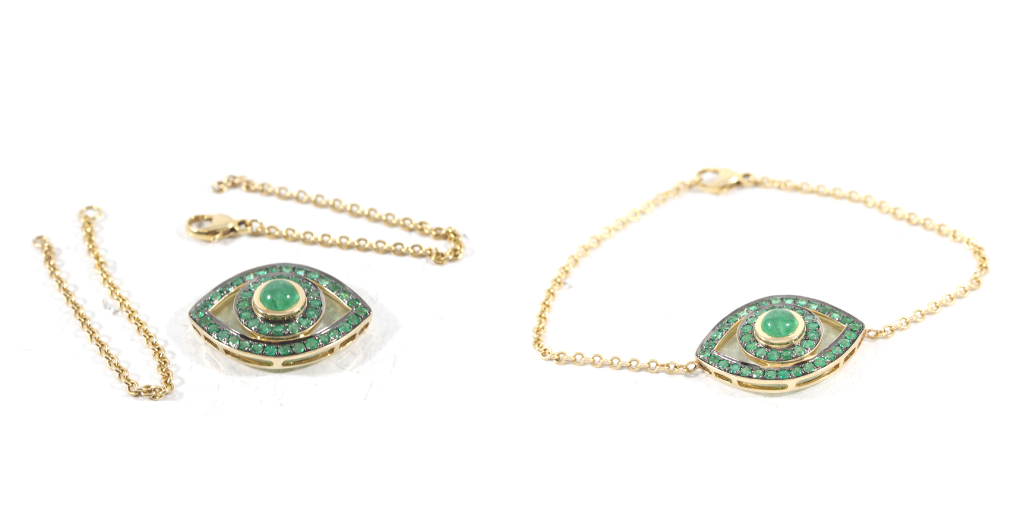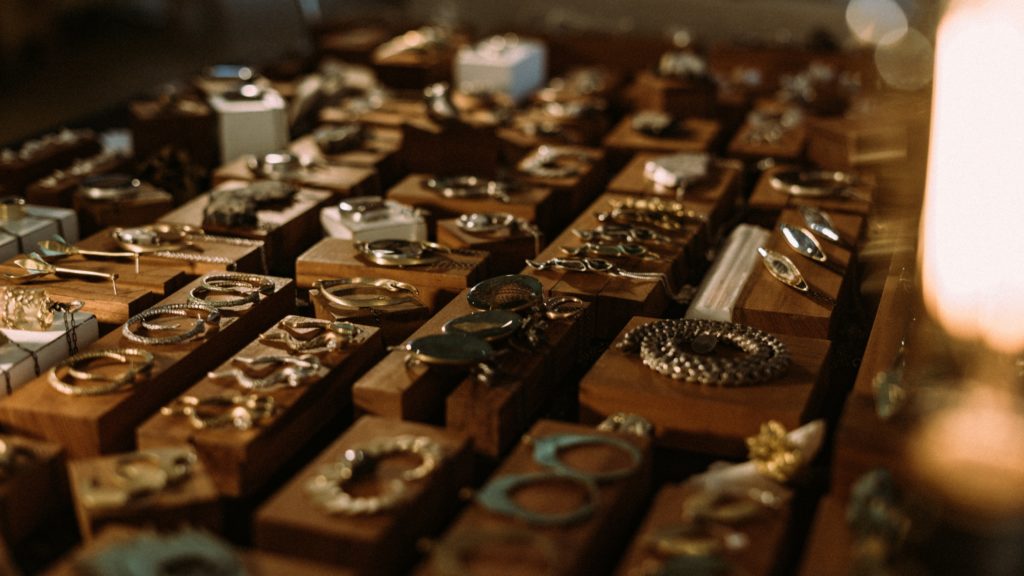Bracelet Repair: The Process
Written by Annabelle
February 21, 2019

Bracelets come in many shapes and sizes- just like the people who wear them! When they break, it's not exactly the most straightforward process to fix them. Here's a rundown of what we normally do when we receive a bracelet repair from our customers.
The Process:
1.Evaluation

A chart depicting common types of bracelets and bangles
- What style is your bracelet? Your bracelet type determines what needs to be repaired. Different styles of bracelets have different components; for instance, a chain bracelet will have a clasp, while a bangle might only have a hinge.
- What is it made out of? The metal affects the work done. Stainless steel is much tougher and more difficult to work with, which means the jeweler needs to take a little more time to repair the damage. Costume jewelry that's plated or colored may show signs of discoloration after repair work, and any plastic or glass gems should be treated with caution as they can be damaged when exposed to heat.
- What's the damage? The most important question of all! The bracelet repair differs depending on the damage. Chain bracelets often break and need to be soldered back together, bangles get crushed or bent out of shape, pearls are unstrung and scattered all over the place… Once we figure out what's wrong (and it's really not rocket science) it's time for the repair.
2. Repair
- Chain soldering: Chain bracelets are cute, but also annoyingly prone to breaking. The jeweler takes the bracelet and mends the break in the bracelet with solder, a metal concoction that has a low melting point. The solder holds the broken pieces together (like a glue), and its low melting point means that it can be heated without affecting the rest of the bracelet.

An emerald evil eye bracelet that needed a quick chain repair.
- Clasp repair: The clasp is the part of the bracelet that secures it around your wrist; without a functioning clasp, you can't wear your bracelet! We can usually repair the existing clasp, but if the damage is too great we can also supply a new one to match the original. Some of our customers even come in to switch their clasps to a more secure style, like a toggle clasp to a lobster clasp.
- Hinge repair: A hinge is a component that's normally found in heavy metal bangles; it allows the bangle to open and close. When a hinge stops working, the bangle won't close properly. While it seems like a simple fix, hinges are actually quite difficult to work with. Depending on the hinge, the jeweler may need to add more metal or tighten an existing inner wire to make it function.

A close-up of a bangle hinge we repaired. Note the inner workings.
- Stone replacement and setting: Missing stones are awful, especially if they're glaringly noticeable. Once we receive your bracelet in house, we examine the piece to determine what kind of stones are set in the bracelet in order to find a replacement that matches. For example, diamonds that are a certain clarity, color, and cut will be replaced with a stone that fits all of the necessary criteria.

A beautiful diamond bracelet with one missing stone.
- Reshaping: Bangles can be bent out of shape after years of loving wear (and bashing on table corners!) The jeweler can bend it back into shape with some skilled handiwork or their jeweler's tools.
- Restringing: Commonly used for broken pearl bracelets, the restringing process entails placing the loose beads or pearls onto a new string. For extra security, you can request knotting; the stringer will place a knot between each pearl to prevent bead loss if the bracelet breaks again.
3. Finishing
- Polishing: Once all the repair work is complete, the item is moved to polishing. This process buffs out any rough patches or scratches from the repair work, and is a necessary step that must be performed before plating.
- Plating: Costume jewelry and white gold jewelry need to be plated after polishing. Any discolorations costume jewelry may sustain during the repair is covered by a coat of color, such as gold plating. White gold jewelry receives a coat of rhodium, a bright white metal that gives white gold its distinctive silvery shine.
- Cleaning: The piece is cleaned to remove any remaining grime. The cleaning process depends on the item; while most jewelry go through ultrasonic and steam cleaning, extra caution is taken with costume jewelry. Stones in costume jewelry are often glued on, so any exposure to water may cause the gems to fall out.
Now you're up-to-date on how to get your bracelets and bangles repaired! If you're ready to get started, check out our bracelet services.



There are a small gold pin in there break I want to join it back .can it be done? It’s take how long to do that pls let me know
Hi there, do you still have the pin that connected the links? We won’t be able to repair the bracelet without it.
My bracelet just got fixed and it broke the same day it was fixed.i also have a ring that has my birthstone can color and it needs to be fixed also.
Hi Lasha, we’ll reach out via email with further details!
I have a steel baraka braclete has com out of clasp
This should be no problem at all! I’ve followed up with next steps via email 🙂